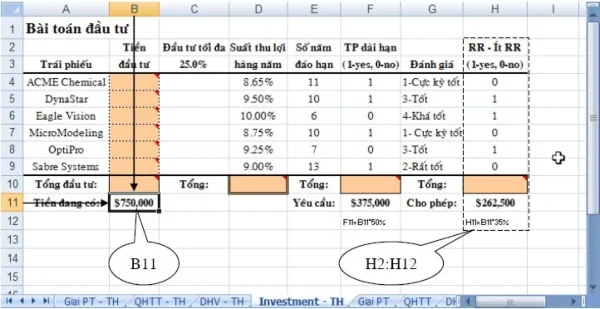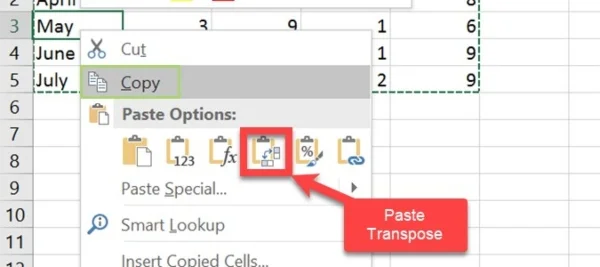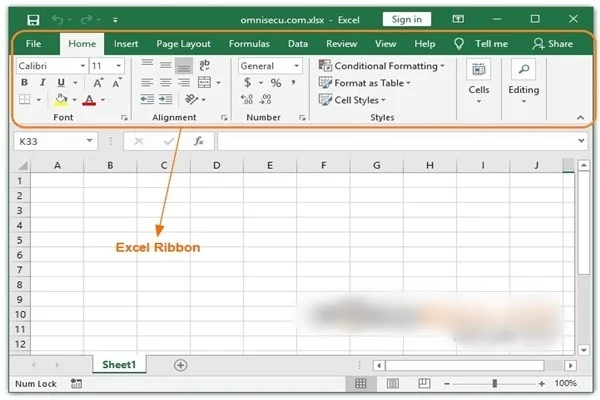Basic Excel specifically for beginners
Excel is a great support tool for office workers. Since its inception, Excel has greatly assisted people in analysis and calculation. The convenience and high accuracy of Excel have provided significant benefits.
I. Starting up the Excel tool
Excel is a Microsoft Office tool used by many people around the world. However, not everyone knows how to start Excel on a computer or how to open multiple Excel files.
Mastering these basic Excel instructions will help you become more proficient in this tool.
1. Starting Excel Desktop
When you install Excel or Microsoft Office on your computer, the system automatically creates a shortcut icon on the screen.
So you just need to double-click the icon to start the tool. Or you can right-click and then select “Open”.
2. Starting Excel using the Start Menu
If your computer is running Windows XP or Windows 7, you can start Excel using the Start Menu. Here, there is an Office software folder containing full shortcut icons for all Office tools.
3. Opening multiple Excel files at once
When you have multiple spreadsheets to resolve, instead of opening each file individually, you can open multiple Excel files at once. You can select the files you want to open and press Enter, the spreadsheets will start simultaneously.
II. Operating selection areas in Excel
To use the basic tools in Excel, you need to master the operations of selection areas in Excel.
1. Identify cells and selection areas in Excel (cells, range)
In Excel, the cell address is determined by the column header and row number. The selection area in Excel is determined by the address of the cell in the upper left corner of the area and the address in the bottom right corner of the area.
Example: In column A, it is determined as A:A, in all row 3, it is determined as 3:3.
Illustrative example: The current cell with address B11 has the column header B and is on the eleventh row. The area surrounded by the dashed line has the address H2:H12 (because the first cell has the address area H2 and the last cell has the address area H12).

2. Selecting areas in Excel
To perform the operation to select an area in Excel, first, you move the mouse to the left corner of the area to select. Then, press and drag the mouse to the position of the last cell in the area to select and release the mouse. Alternatively, you can hold the Shift key and press the arrow key to move to the area to select, then release all the keys.
3. How to transpose rows to columns or vice versa
After you've finished creating your table, but want to transpose rows into columns, you need to take the following steps:
Step 1: Select the row (or column) to transpose. Then you press Copy on the menu bar or use the shortcut “Ctrl+C”.
Step 2: Select the cell where you want to paste the spreadsheet and select Paste Special on the Menu toolbar. Alternatively, you can press the “Alt+E” key combination and press the “S” key.
Step 3: In the Paste Special table, select Transpose or the pictorial symbol and press OK.

III. Most basic Excel tools
After mastering the operations for selecting areas in Excel, you need to grasp the tools contained in Excel to be more professional.
1. Ribbon Tool Bar in Excel
The Ribbon Tool Bar in Excel is at the top of the interface to edit fonts, colors, create tables, embed images,...
Currently, Excel versions have been improved, with a more intuitive interface, easy to see and easier to use than the 2003 version.
2. The Ribbon Toolkit includes the following features
- Home: This feature contains command buttons for formatting fonts, font styles, text alignment, copying, pasting,...
- Insert: A feature that contains tools to insert charts, drawings, etc...
- Page Layout: This feature allows you to use spreadsheets and print.
- Formulas: This is a feature that provides you with math formulas, helps you customize the calculation process and tracks formulas.
- Data: This feature contains command buttons to exchange data between files inside and outside Excel.
- Review: This feature includes commands to spell check, add comments…
- View: This feature sets up how to display spreadsheets, such as zoom in, zoom out, compact,...
- Developer: This feature contains tools for programmers.
- Add-Ins: Contains calculation functions in Excel and additional utilities.
3. Customize the Ribbon Toolbar for your own use
You can customize the functionality of the Ribbon Toolbar as follows:
Step 1: Go to the File tab, then select the Option box:
Step 2: Functional options will appear in the Excel Options dialog box. If you want to display a different function, select the Quick Access Toolbar. Here, choose the features to put on the Ribbon toolbar, then select Add. To complete the customization process, click OK.

IV. Calculation function in Excel and how to use
When working with Excel, you may frequently encounter basic functions. These functions help us to perform absolute calculations and are very convenient.
The Excel function includes formulas that are programmed and available in Excel, you just need to remember and apply them to your work. Here are the basic functions in Excel that help you to easily calculate data.
1. Count function in Excel
The Count function is used to help you know how many data cells are in an area or in an entire spreadsheet (this data contains only numbers, no letters). Instead of you counting each cell by hand, you can use the function with the formula:
=Count(Value 1: Value 2)
Example: If you want to count the data from cells B1 to B10, use the formula =Count(B1:B10)

2. Sum function in Excel
The Sum function is a basic function that anyone learning Excel must know. The Sum function helps you calculate the total of the numbers in a selected column or row. To use the Sum function, you can use the formula:
=SUM(Number1;[Number2],...)
Example: If you want to calculate the total of cells A1 and B1, you need to perform the command =Sum(A1;B1) and then press the “Enter” key. The result of the sum function will appear immediately in the cell where the function execution is done.

What other basic Excel operations would you like to learn more about? Comment below so we can guide you in more detail. Excel is a crucial software in study and work. Don't forget to learn and enhance your necessary Excel skills to apply.
Submit feedback
Your email address will not be made public. Fields marked are required *
Search
Trend
-
What is Black Myth: Wukong? Detailed Guide on System Requirements and Gameplay
08-21-2024 . 1k view
-
The simplest and fastest way to log into the Chinese TikTok, Douyin.
01-10-2022 . 961 view
-
Call of Duty: Black Ops 6 - Intense, Mysterious, and Surprising Warfare
09-02-2024 . 956 view
-
The "End of Life" for Windows 10: A Massive E-Waste Threat and Sustainable Solutions
08-18-2024 . 898 view
-
Blog sites that will accept AI generated content
07-26-2024 . 887 view












0 feedback